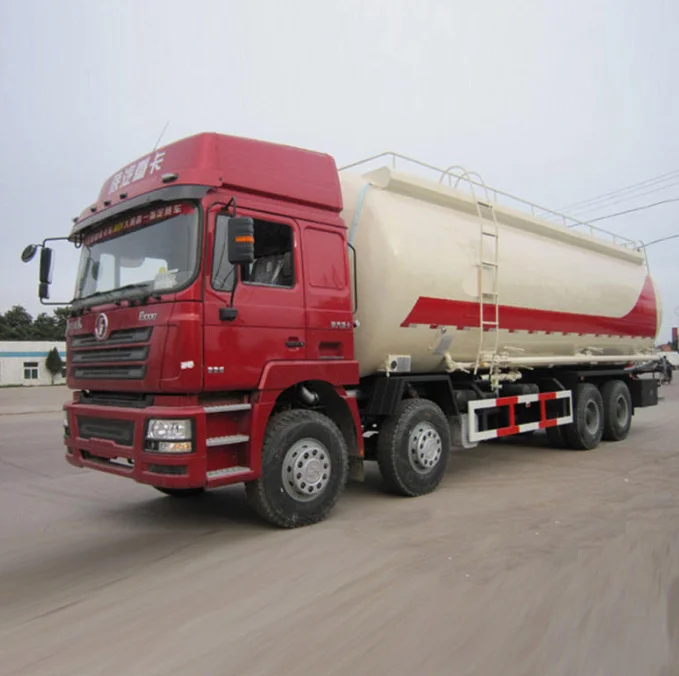Companies that relied on moving dry bulk products, the fleet is no longer an expense centre, it is the income generator. The trucks are both large capital investments. The goal is to add as much value as possible to the investment day in and day out. An unproductive fleet or a fleet that is specialized in only one activity or one that experiences frequent downtimes is a vehicle that is a liability to profitability. The secret behind unlocking the full financial performance lies in building and operating a multi-faceted large truck fleet that can react to varying market conditions and operate at full efficiency.
Profitability is not just about how much the hauls bring in, but rather about how well you can consistently minimize the costs involved and the utilization of your resources. A flexible bulk truck can serve many customers and deal with various materials and face various delivery scenarios that enable it to be invoiced more often. This needs a paradigm shift not merely in ownership of trucks, but in a multi-faceted array of assets.
Tactical Fleet Formation and Employment
Investment in Multi-Compartment trailers
The simplest method of increasing flexibility is to buy bulk trucks with multiple compartments. This allows a single truck to carry a number of different items on behalf of one customer or a number of items on behalf of different customers on the same trip. This gets new revenue avenues such as supplying concrete plants with cement, fly ash and sand which are all delivered at the same point but separated.
Right-Sizing Your Fleet Mix
An effective fleet is not one that is composed of similar trucks. It is a combination of cars that are adapted to different work needs. It may consist of small, less maneuverable bulk truck units which can be deployed on narrow urban work sites and large capacity units to support long-haul, high-volume contracts. The right size will keep you from having to spend a lot on a truck to do a $50,000 project yet still retain your investment to do the work they were created to do.
The adoption of Advanced Routing and Dispatch Software
Technology is also a multiplier of power that can be used to make more profit. A modern fleet management program allows dispatchers to monitor the location and condition of every bulk truck. This would help them to best plan routes to achieve fuel efficiency, assign the closest vehicle to the new task, and minimize the Deadhead mileage (traveling in a state of non-operation). Minor changes in wasted miles can also create a considerable impact on the bottom number of miles.
Exploiting Backhaul Opportunities
An empty return trip is one of the largest costs incurred on a profit. Finding backhaul opportunities – to carry material on the inbound side of a trip – actually accomplishes the task of making two trips out of one. Connecting with as many receivers and suppliers as possible will enhance your probability of finding a suitable cargo on your bulk vehicle in a transport back to the home depot.
For businesses managing oversized or heavy goods deliveries beyond their own fleet capacity, partnering with a reliable Large Item Courier can help ensure safe, cost-effective, and on-time transportation of bulky shipments.
Managing Costs and Improving Efficiency
An Aggressive Preventive Maintenance Program
Profits are the enemy of downtime. Scheduled, active maintenance of your bulk truck fleet is nowhere near the unplanned, unanticipated, and unscheduled roadside repairs and missed business. It extends the life of your equipment, maximizes the efficiency of your fuel and prevents small issues becoming big costly failures. Resale value of clean trucks is also the highest.
Keep Track of Fuel Use and Roadside Manoeuvres
Fuel is one of the costliest operation costs. Telematics systems can monitor fuel consumption in real time and identify inefficient driver behavior including excessive acceleration, harsh acceleration idle time and speeding. Educating drivers on environmentally friendly driving habits and rewarding efficient operation might lead to huge savings in the whole fleet of trucks.
Handling Tire Life and inventory
Tires are an important, recurrent cost. A tire management program that incorporates monthly pressure tests, rotations and alignments will help you stretch the life of your tires significantly. Also buying tires in large quantities and smart inventory management can prevent costly emergency buying and keep your truck’s bulk assets in a healthy state.
Investing in Retention and Training of Drivers
There can be a good driver, a professional, skilled one. They can safely and efficiently use the equipment and efficiently represent your business that they do not need as much control. Investing in comprehensive training and providing the working environment conducive to retaining experience will help to lower both the recruitment cost and the number of accidents and insurance premiums that will directly translate into increased profitability of your fleet itself.
Conclusion
A strategy to add value to a fleet of bulk trucks must be one-sided where the element of revenue production and cost control are addressed. By building up a versatile fleet capable of completing a wide range of tasks, by using technology to offer the best routing and backhaul opportunities and by adopting a very strict program to deal with maintenance and driver management firms can realize the full value of their investments. A bulk truck is most likely to be profitable when the truck is working with a payload. It will be done systematically and based on data to ensure that it occurs as often as possible, and has the best and most enduring financial payoff.

